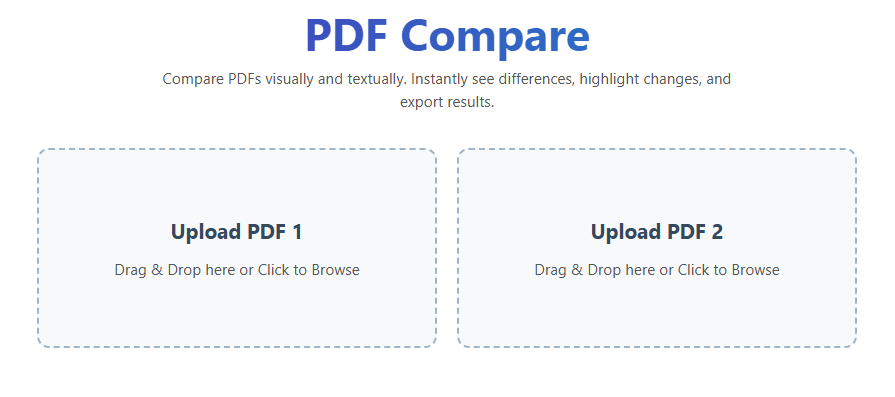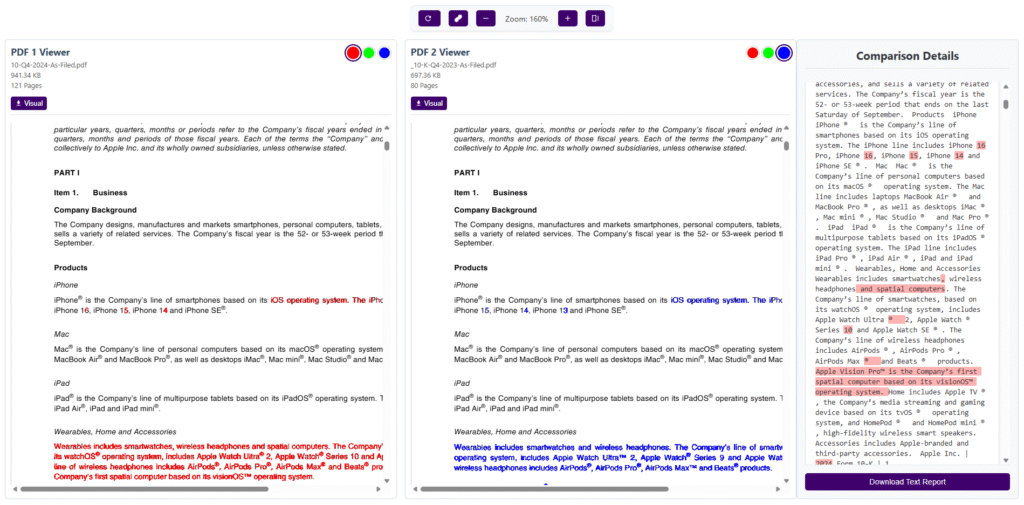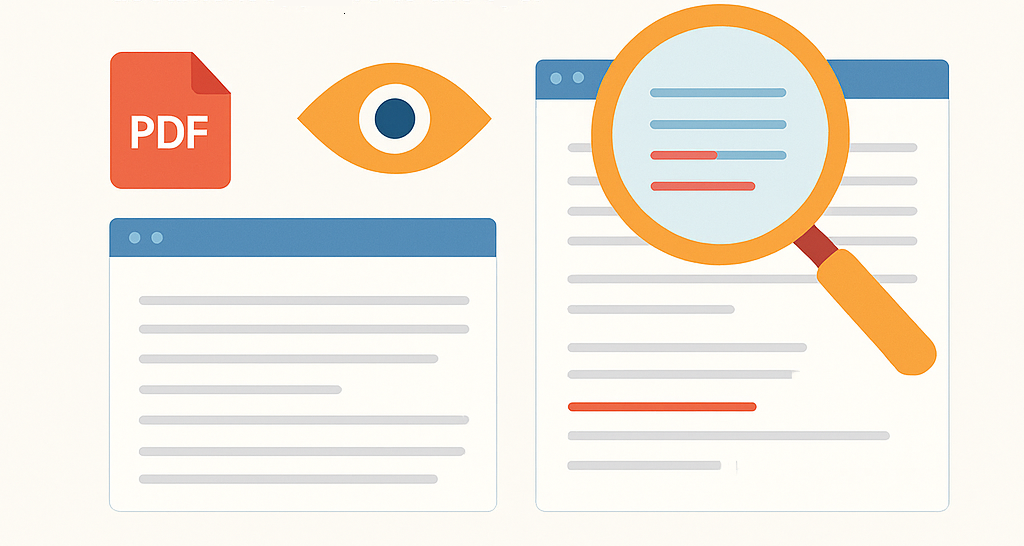Why PDF compare features are necessary
In today’s digital world, PDF compare tools have become essential for professionals handling documents. Whether you’re a lawyer reviewing contracts, an engineer analyzing blueprints, or a marketer proofing layouts, the ability to compare PDFs visually and textually can save time, avoid mistakes, and ensure consistency.
But what does it really mean to compare a PDF visually versus textually, and why do both matter?

The 2 Ways to Compare PDFs
Textual Comparison focuses on the content — the words, numbers, and formatting behind the scenes. This method identifies edits like deleted phrases, added clauses, or even subtle formatting changes such as bold text or italics.
Visual Comparison, on the other hand, looks at the layout — how the document appears to the eye. This is especially useful for scanned documents, complex layouts, or forms where structure is just as important as content.

Why You Need Both
Here are a few real-world examples of why PDF compare features (textual and visual) are necessary:
Legal contracts: You might miss a small but critical word change like “shall” to “may” in a 50-page agreement. A textual compare will catch that — but a visual compare can alert you if a clause was moved, misplaced, or reformatted in a way that changes its visibility or emphasis.
Blueprints or architectural drawings: Text may be limited, but layout and lines matter. A visual compare will detect structural changes — like a wall moved or removed — which a textual comparison won’t.
Marketing brochures: A designer may change a brand color, spacing, or image placement. Visual compare tools highlight these changes, while textual compare ensures slogans, pricing, or terms haven’t been altered.
Government forms or invoices: Even a shifted table or number can impact approval. A hybrid comparison helps ensure forms are accurate both in appearance and data.
Avoiding Human Error
Manual PDF comparisons are not only slow — they’re unreliable. It’s easy to miss small changes, especially when comparing documents side by side with your eyes. Automated PDF compare tools reduce human error, highlight differences clearly, and improve compliance.
Adding PDF Compare to your Analysis
A smart workflow includes both textual and visual PDF comparison. This dual approach ensures no changes — visual or written — go unnoticed. Whether you’re verifying layout changes or contract terms, combining both views gives you full confidence in your documents.




